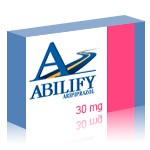Inside Bipolar Mania


Bipolar disorder is a chronic psychiatric condition characterized by dramatic shifts in mood, energy levels, activity, and the ability to function. These mood changes swing between two extremes: depressive episodes and manic or hypomanic episodes. While depressive states are marked by sadness, fatigue, and withdrawal, manic phases reflect the opposite end of the spectrum, bringing heightened mood, increased activity, impulsivity, and sometimes dangerous behaviors. Understanding the manic phases of bipolar disorder is crucial for accurate diagnosis, effective treatment, and long-term management of the illness.
What Is the Manic Phase of Bipolar Disorder?
The manic phase is one of the hallmark components of bipolar I disorder, where individuals experience a distinct period of abnormally elevated, expansive, or irritable mood lasting at least one week. This elevated mood is often accompanied by an increase in goal-directed activity or energy. The person may seem euphoric, excessively cheerful, or overly confident. In some cases, this can escalate into risky behavior, such as spending sprees, substance abuse, reckless driving, or inappropriate sexual activity.
Mania is not simply a good mood. It is a pathological state that can seriously impair judgment, disrupt relationships, and sometimes lead to hospitalization. People in a manic phase may speak rapidly, need very little sleep, and have racing thoughts.Their self-esteem may become inflated to the point of grandiosity — believing they have special powers, talents, or a unique mission. In severe cases, they may experience psychosis, including hallucinations or delusions.
Mania differs from hypomania, a milder form seen in bipolar II disorder. Hypomanic episodes also involve elevated mood and increased energy but do not lead to significant functional impairment or psychosis.
The Four Stages of Mania
Mania typically develops gradually and can be broken down into four stages. Recognizing these stages is vital for timely intervention:
- Hypomania – This is often the earliest phase, where the mood is elevated but not yet disruptive. The person may appear charismatic, productive, energetic, or more sociable. Sleep needs decrease, but functioning often remains intact. This stage can be seductive and even mistaken for a “productive period.”
- Acute Mania – The symptoms intensify significantly. The person becomes increasingly excitable, impulsive, and agitated. Thoughts race, speech becomes pressured, and judgment begins to deteriorate. Risky behavior is common, and insight into the illness is usually absent. It is in this phase that hospitalization may become necessary.
- Delirious Mania – This severe stage, though rare, represents a psychiatric emergency. It involves extreme disorganization, confusion, disorientation, and sometimes hallucinations. The person may be completely out of touch with reality and at serious risk of harm to themselves or others.
- Resolution/Recovery Phase – With appropriate treatment, the manic symptoms gradually subside. This stage can be accompanied by feelings of embarrassment, regret, or depression as individuals begin to realize the consequences of their behavior during mania.
Each person's experience with mania may differ, and not all individuals move linearly through all four stages. Nonetheless, these categories provide a useful framework for clinicians and families.
Understanding Stage 4 Bipolar Disorder
Stage 4 bipolar disorder is a term sometimes used in clinical discussions and research to describe a chronic, treatment-resistant, and highly disabling form of the illness. While not officially part of DSM-5 criteria, this “staging model” views bipolar disorder as a progressive condition that can worsen over time without effective treatment.
Stage 4 typically refers to individuals who:
- Have had numerous mood episodes, often with rapid cycling (four or more episodes per year)
- Show signs of cognitive decline or diminished functioning
- Have comorbid conditions, such as substance use disorder or anxiety
- May not respond well to standard treatments
These patients often experience persistent symptoms, functional impairments, and require complex, long-term care. Identifying and managing bipolar disorder in its earlier stages is crucial to prevent progression to this severe phase.
The Bipolar Cycle of Mania
Bipolar disorder is cyclical by nature, with individuals fluctuating between depressive and manic states, often interspersed with periods of normal mood (euthymia). The cycle varies widely in length and intensity between individuals and even within the same person over time.
The bipolar cycle of mania can unfold in different ways:
- Some people experience long intervals between episodes, while others may cycle rapidly.
- In rapid cycling bipolar disorder, there are four or more mood episodes within a 12-month period.
- In ultra-rapid or ultradian cycling, mood changes can occur over days or even within a single day.
A manic episode can emerge suddenly or be preceded by warning signs like insomnia, irritability, or increased goal-oriented behavior. Without intervention, mania can peak quickly, often leading to hospitalization. Eventually, the episode may be followed by a crash into depression, as the body and mind reel from the prolonged overstimulation.
Managing this cycle is a core challenge in the long-term treatment of bipolar disorder. The goal is not only to treat current symptoms but also to prevent future episodes and stabilize mood over time.
The Role of Abilify in the Treatment of Mania
Abilify (generic name: aripiprazole) is an atypical antipsychotic medication that plays an important role in managing the manic phases of bipolar disorder. Approved by the FDA for the treatment of manic and mixed episodes associated with bipolar I disorder, it can be used alone or as part of combination therapy.
Aripiprazole works primarily by modulating dopamine and serotonin receptors in the brain. Unlike older antipsychotics that primarily blocked dopamine, Abilify functions as a partial agonist — meaning it both stimulates and inhibits dopamine activity depending on existing levels. This mechanism helps stabilize mood with a lower risk of side effects such as sedation or weight gain, which are more common with other medications.
In the context of acute mania, Abilify can:
- Reduce psychotic symptoms such as delusions and hallucinations
- Improve mood stability
- Decrease impulsivity and hyperactivity
- Help restore sleep patterns
For long-term management, Abilify may be continued as a maintenance medication to reduce the risk of relapse. Its relatively favorable side effect profile makes it a suitable choice for many patients, especially those who do not tolerate other mood stabilizers like lithium or valproate.
However, as with all psychiatric medications, response to Abilify varies from person to person. Some may experience restlessness, insomnia, or akathisia (a feeling of inner agitation). It is important that treatment be carefully monitored by a healthcare provider, and that any concerns or side effects be discussed promptly.
Managing Mania: Beyond Medication
While pharmacological treatment is essential for controlling manic episodes, a comprehensive management plan also includes psychoeducation, lifestyle adjustments, therapy, and strong support networks.
- Psychoeducation helps individuals and their families understand the nature of bipolar disorder, recognize warning signs, and adhere to treatment plans.
- Cognitive Behavioral Therapy (CBT) and Interpersonal and Social Rhythm Therapy (IPSRT) are valuable tools in helping patients manage stress, maintain routines, and build coping strategies.
- Maintaining regular sleep schedules, avoiding alcohol and drugs, and minimizing stress can significantly reduce the risk of relapse.
- Family involvement is particularly important. Educating loved ones about the stages of mania and how to respond can prevent escalation and encourage early intervention.
Early detection and consistent management are key. Many individuals with bipolar disorder, once stabilized, go on to lead productive and fulfilling lives.
Can You Live a Normal Life with Bipolar Disorder?
Yes, many people with bipolar disorder — when properly diagnosed and treated — can live full, meaningful lives. The notion of a “normal” life may shift based on the severity and frequency of episodes, but with effective treatment, symptoms can be controlled, and functioning can be preserved or restored.
Acceptance of the condition, combined with a proactive treatment plan, often leads to better long-term outcomes. Many patients pursue careers, maintain relationships, and even thrive creatively or professionally. Several public figures have openly discussed their bipolar diagnosis and how they manage it, helping to reduce stigma and raise awareness.
Life Expectancy and Bipolar Disorder
Research suggests that individuals with bipolar disorder may have a reduced life expectancy compared to the general population. This is due in part to:
- Higher rates of suicide
- Increased risk of cardiovascular disease, diabetes, and obesity
- Lifestyle factors such as substance abuse or lack of physical activity
However, with effective treatment, regular medical care, and healthy lifestyle choices, many of these risks can be significantly mitigated. Importantly, early diagnosis, medication adherence, and holistic care improve both quality of life and longevity.
Conclusion
The manic phases of bipolar disorder are intense, potentially dangerous periods of elevated mood, activity, and behavior that can cause major disruptions in a person's life. Recognizing the stages of mania, understanding the bipolar cycle, and learning about treatment options like Abilify are crucial for effective management. With comprehensive care that combines medication, therapy, education, and support, individuals with bipolar disorder can regain control over their lives and build a stable future. Although the condition is lifelong, it does not define the person—and with the right tools, stability and fulfillment are within reach.
Medically Reviewed by Dr. Rabeea Aboufakher, MD
(Updated at Jun 28 / 2025)

